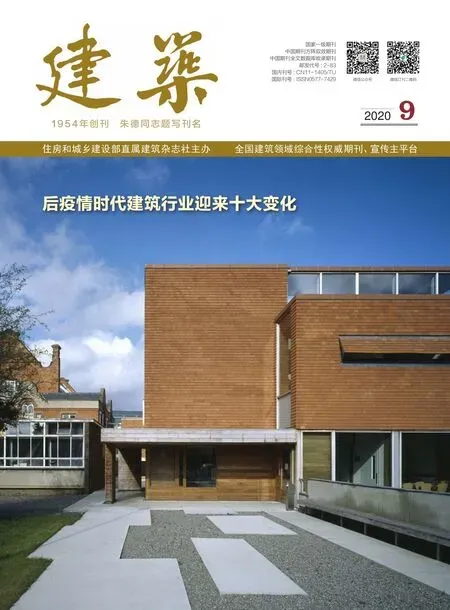工程合同译评(17)FIDIC文本中“人身伤害和财产损害保险”条款
文 / 李 健
前面我们讨论了FIDIC1999 建造合同文本Conditions of Contract for Construction“18.2 工程和承包商设备保险”18.2 Insurance for Works and Contractor’s Equipment 翻译中的语言及法律问题。接下来,我们讨论18.3 Insurance against Injury to Persons and Damage to Property,即:18.3 人身伤害和财产损害保险。
原文1:The insuring Party shall insure against each Party’s liability for any loss, damage, death or bodily injury which may occur to any physical property (except things insured Sub-Clause 18.2 [Insurance for Works and Contractor’s Equipment]) or to any person (except persons insured under Sub-Clause 18.4[Insurance for Contractor’s Personnel]), which may arise out of the Contractor’s performance of the Contract and occurring before the issue of the Performance Certificate.
试译:除18.2 款【工程和承包商设备保险】下已保险的物件以及18.4 款【承包商员工保险】下的人员之外,投保人应当为每一方办理责任险,以弥补可能出现的任何有形财产或任何人员损失、损害、死亡或身体伤害,只要此类损失、损害、死亡或身体伤害可能由承包商履行合同而引起且发生在履约证书签发之前。
点评:1.这里要求投保人为各方当事人(特别提示是建造合同当事人)办理第三方责任险,即当任何一方当事人需要对第三方因施工所受损失、损害、死亡或身体伤害承担责任时,投保人应当就此等责任办理保险。
2.这段英文译成顺达的中文非常不易。此处引两个不同文献对这段英文的翻译,以便读者对照本文的试译,感觉翻译之难。其一,“保险当事人应对各方当事人负责的任何损失、损害、死亡或身体伤害保险,此类事宜可能发生在任何有形财产(不包括在第18.2 款【工程和承包商机具的保险】下保险的事宜)或发生在任何人员(不包括在第18.4 款【承包商员工的保险】下保险的人员),可能出现在承包商履行合同之外以及发生在履约证书签发之前。”其二,“应投保方应为可能由承包商履行合同引起、并在履约证书颁发之前发生的,任何物质财产(根据18.2 款【工程和承包商设备的保险】规定被保险的物品除外)的任何损失或损害,或任何人员(根据18.4 款【承包商人员的保险】规定被保险的人员除外)的任何死亡或伤害,办理每方责任险。”
3.下面具体分析一下这段英文中的语言问题。首先,要办的保险是责任险。insure against each Party’s liability,insure的宾语是liability,要办的保险不是直接针对责任内容的loss,damage, death or bodily injury。凡是翻译成办理损失、损害、死亡或身体伤害的保险,均属错误。其次,我们应当注意两个which 引导的定语从句,其性质是不同的。which may occur to any physical property (except things insured Sub-Clause 18.2 [Insurance for Works and Contractor’s Equipment])or to any person (except persons insured under Sub-Clause 18.4 [Insurance for Contractor’s Personnel]),是限定性定语从句;which may arise out of the Contractor’s performance of the Contract and occurring before the issue of the Performance Certificate,则是非限定性定语从句。凡是不做区分地翻译成中文的前置定语,则译文显得诘屈聱牙,或不做区分地翻译成中文后置补充成分,则译文文意显得松散;两者均不能体现英文原文限定性定语和非限定性定语的差异。其三,对括号内内容的处理。由于括号内内容较多,将括号前后本来联系比较密切的内容分开,意思中断、松散,既不符合中文的书面表达,又不符合中文的口语表达。试译直接将括号内内容提到句首,又鉴于其内容属于“除外”内容,在文法地位上也是次要的,恰与括号的补充(非主要)功能相一致,这样试译译文紧凑得多。综合这三点,我们去掉次要成分,这段英文将变成—The insuring Party shall insure against each Party’s liability.此时,看起来要明了得多。
原文2:This insurance shall be for a limit per occurrence of not less than the amount stated in the Appendix to Tender, with no limit on the number of occurrences.If an amount is not stated in the Appendix to Tender, this Sub-Clause shall not apply.
试译:对每次发生的保险事故,此保险的保险金额不得少于投标函附录中规定的数额,但对事故发生次数并无限制。如果在投标函附录中没有注明此类金额,则本款将不适用。
点评:1.这是对每次发生人身伤害或财产损害时的保险金额最低限度的规定;但对发生人身伤害或财产损害的次数并无限制。
2.occurrence,在此语境中,是“发生”保险事故的意思,是动词occur(出现,发生)的名词形式。所谓保险事故是指保险合同约定的保险责任范围内的事故。An insured event refers to an event falling within the scope of cover under the insurance contract.
3.这里对insurance 后接不同介词表示的意义做一总结。
当表示所要保险的物件或人时,后接介词for 或on,如insurance on the 100 tons of steel,18.2 款的标题Insurance for Works and Contractor’s Equipment,18.4 款的Insurance for Contractor’s Personnel;
当表示投保的险别时,后接介词against,如insurance against all risk/against liability,本文讨论的18.3 款的标题18.3 Insurance against Injury to Persons and Damage to Property;
当表示保险金额时,后接介词for,如insurance for 110%of the invoice value,这里是This insurance shall be for a limit …;
当表示保险费率时,后接介词at,如insurance at the rate of 5%;
当表示向保险人投保时,后接介词with,如insurance with the People’s Insurance Company of China。
原文3:Unless otherwise stated in the Particular Conditions,the insurances specified in this Sub-Clause:
(a) shall be effected and maintained by the Contractor as insuring Party,
(b) shall be in the joint names of the Parties,
(c) shall be extended to cover liability for all loss and damage to the Employer’s property (except things insured under Sub-Clause 18.2) arising out of the Contractor’s performance of the Contract, and
(d) may however exclude liability to the extent that it arises from:
(i) the Employer’s right to have the Permanent Works executed on, over, under, in or through any land, and to occupy this land for the Permanent Works,
(ii) damage which is an unavoidable result of the Contractor’s obligations to execute the Works and remedy any defects, and
(iii) a cause listed in Sub-Clause 17.3 (Employer’s Risks),except to the extent that cover is available at commercially reasonable.
试译:除非专用条款中另有规定,本款规定的保险:
(1)应当由承包商作为投保人办理并使之保持有效;
(2)应当以合同双方当事人联合的名义投保;
(3)应当扩展到由承包商履行合同而导致的业主财产所有损失和损害的责任(18.2 款下已保险的物件除外);
(4)但可以不包括以下事项引起的责任:①业主在任何土地上面、上方、下面、里面、或穿过其间实施永久工程以及为永久工程占有该土地的权利,②承包商履行实施工程及修补缺陷义务所无法避免的损害性结果,③第17.3 款【业主的风险】所列的原因(但可以以商业上合理的条件得到的保险除外)。
点评:1.这里规定了保险由谁办理、以谁的名义办理、保险可扩展的范围以及保险排除事项。
2.这段英文中to the extent that 这个短语出现了两次,其意义是:在何种意义上,在何种程度上,在什么限度内,从什么方面来说。
3.虽然从合同自由上来说,本款的规定可以由专用条款的相反约定而排除,譬如约定保险范围不扩展到由承包商履行合同而导致的业主财产所有损失和损害的责任,但从实践来看,不建议承包商试图做这种相反约定,这种对保险范围的扩展,有利于承包商利益的稳定预期,但却无需增加多少保险费。
18.3 款讨论完毕。FIDIC 1999 建造合同文本Conditions of Contract for Construction 保险条款还有18.4 款“承包商员工保险”的内容,为展示保险条款全貌,这里将英文照录如下,读者可以自行探索。
18.4 Insurance for Contractor’s Personnel
The Contractor shall effect and maintain insurance against liability for claims, damages, losses and expenses (including legal fees and expenses) arising from injury, sickness, disease or death of any person employed by the Contractor or any other of the Contractor’s Personnel.
The Employer and the Engineer shall also be indemnified under the policy of insurance, except that this insurance may exclude losses and claims to the extent that they arise from any act or neglect of the Employer or of the Employer’s Personnel.
The insurance shall be maintained in full force and effect during the whole time that these personnel are assisting in the execution of the Works.For a Subcontractor’s employees,the insurance may be effected by the Subcontractor, but the Contractor shall be responsible for compliance with this Clause.

